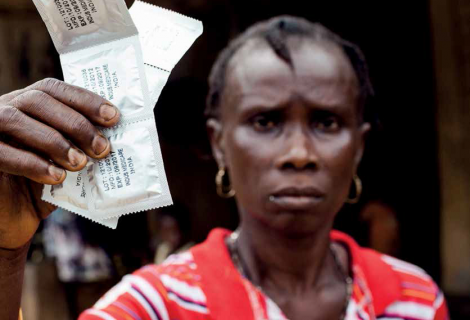
Common Cause, Collaborative Response: Violence Against Women and Girls and Sexual and Reproductive Health and Rights
The right to choose where you go, what you wear, when and with whom you have sex, who you marry and if and when you have children: these are choices that many people reading this paper will assume are theirs to take. But the reality is that for the vast majority of women and girls, it is simply not the case.
This report is released on the occasion of the international Family Planning summit, to be held on 11th July 2017, a follow up to the 2012 summit on the same theme.
As a result of the commitments in 2012, 538,000 maternal deaths have been averted through modern contraception use. However, the most ambitious goal – for 120 million additional women and girls to be using modern contraception by 2020 – still appears out of reach, with just 25% of that target met.
The slower than planned progress towards the summit’s major target is at least partially due to the lack of incorporation of Violence Against Women and Girls (VAWG) prevention and response into Sexual and Reproductive Health and Rights (SRHR) work, including family planning.
The evidence presented in Section 1 of this report – ‘Common Cause’ – makes the case that without addressing VAWG and its root causes, progress on SRHR – including family planning – will be slow, unsustainable and will leave women and adolescent girls who experience violence behind.
The report sets out how intimate partner violence (IPV) limits women’s voice, choice and control over their bodies, and the exacerbating effect of child marriage and female genital mutilation, especially on adolescent girls. We reiterate the case for comprehensive SRHR policy and practice to take into account the impact that coercion, control and VAWG has on SRHR issues.
On the occasion of the Family Planning Summit there is a real opportunity to galvanize renewed political commitment and financial resources to enable more women and girls to use contraceptives by 2020. This will lead to fewer unintended pregnancies and unsafe abortions, and prevent needless deaths. But this can only be achieved if policy-makers address the underlying cause of gender inequality, namely patriarchy.
Section 2 on ‘Collaborative Responses’ concludes the paper with a comprehensive set of recommendations to policy makers, governments and programmers. Whilst
ActionAid commends many major donors and governments in their work on VAWG and SRHR, there is still much to do. Our key recommendations to donors and governments for this summit and beyond are:
- To engage in international influencing to increase awareness about the links between VAWG and SRHR with world leaders;
- To apply an intersectional gender-impact analysis to all strategies, programmes and projects – whether explicitly gender-related or not;
- To increase sustainable, long-term funding for intersectional grassroots feminist and women’s rights organisations, coalitions, campaigns and programming consortiums at the forefront of the struggle for ending VAWG, realising SRHR and achieving gender equality;
- To implement individual and institutional norms change work regularly and consistently, and seek to end policy related barriers that prevent unmarried women and adolescent girls from receiving comprehensive SRHR services;
- To provide funding that supports tackling the spectrum of VAWG and SRHR – rather than focusing on single issues in isolation and without recognition that each form of VAWG is interlinked with others, that SRHR is linked to VAWG and that the root cause of both is gender inequality.